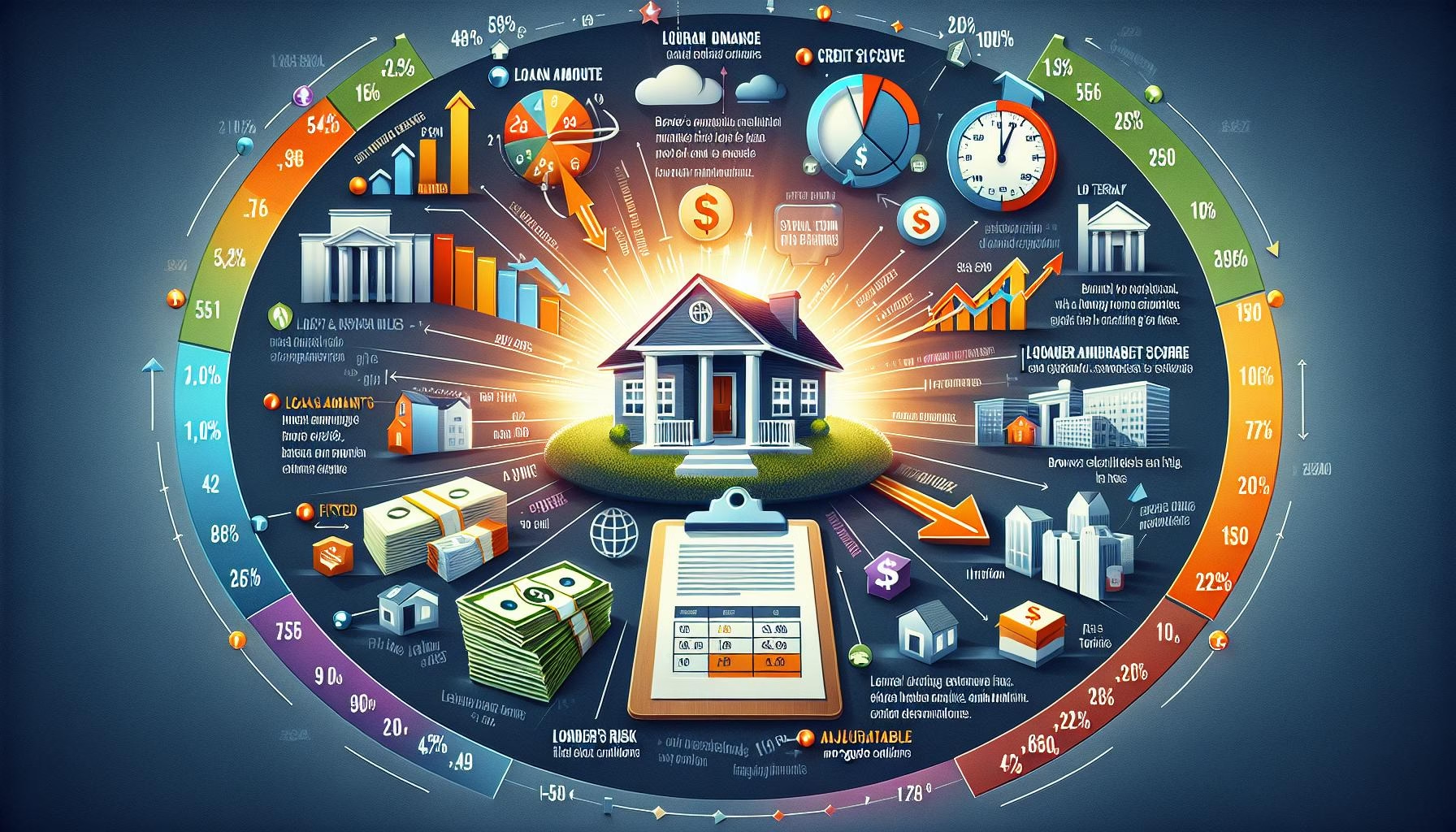When it comes to buying a home, one of the most important things to understand is how mortgage rates work. These rates don’t just affect your monthly payments—they can significantly impact your long-term financial stability too. The good news? When you understand how mortgage rates operate, you can use them to your advantage and improve your financial future.
In this post, we’ll break down mortgage rates in simple terms, show you how they work, and give you tips on using them to support your overall money goals.
What Are Mortgage Rates, Really?
Before we dive into the details, let’s be clear: a mortgage rate is the interest you’ll pay on the loan you get to buy your house. It’s usually expressed as a percentage—like 6.5%—and it determines how much extra you’ll pay back on top of the amount you borrowed.
Just like gas prices or groceries, mortgage rates tend to move up and down. They’re influenced by a variety of factors, including the economy, your credit score, and even how much money you put down.
Here’s the thing: even a small shift in mortgage rates can mean thousands of dollars more (or less) in interest over the life of your loan.
1. They’re Based on the Broader Economy
Mortgage rates don’t live in a bubble. They are closely tied to the state of the U.S. economy—especially inflation, unemployment, and the Federal Reserve’s monetary policy.
When the economy is strong and inflation is rising, the Federal Reserve often raises interest rates, which can cause mortgage rates to go up too. On the flip side, when the economy slows down and inflation drops, mortgage rates often decrease.
Pro tip: If you’re planning to buy a home or refinance, paying attention to economic news and interest rate announcements can help you time your decision better.
2. Fixed vs. Adjustable-Rate: What’s the Difference?
Home loans usually come in two flavors: fixed and adjustable.
Fixed-rate mortgages have the same interest rate for the life of the loan. That means your monthly payment stays predictable—which is great for budgeting.
Adjustable-rate mortgages (ARMs) start with a lower rate for a few years but then adjust annually based on market trends. This could mean a lower rate initially, but riskier payments down the road.
So, which should you choose? If you plan to stay in your home long term and like stability, a fixed-rate might make more sense. But if you’re buying a starter home or know you’ll move in a few years, an ARM could save you money in the short term.
3. Your Credit Score Plays a Big Role
Here’s where your personal finances really come into play. Lenders use your credit score to decide how risky it is to lend you money—and they adjust your mortgage rate accordingly.
Generally, higher credit scores earn lower rates. That’s because lenders see borrowers with strong credit as less likely to default on their loans.
Want a lower mortgage rate? Try these tips to boost your credit:
- Pay your bills on time
- Keep credit card balances low
- Check your credit report regularly for errors
A few small changes in your credit habits can add up to major savings over the life of your loan.
4. Loan Type and Term Matter
Mortgages come in different shapes and sizes. Depending on the type of loan you choose—such as FHA, VA, or conventional—and how long your loan term is (like 15 vs. 30 years), you’ll see different mortgage rates.
In general:
- 15-year mortgages come with lower rates but higher monthly payments.
- 30-year mortgages have slightly higher rates, but the payments are more manageable.
Your choice should be based on your budget and financial goals. If you can afford the higher payment, a shorter loan term could save you thousands in interest.
5. Larger Down Payments Can Earn Lower Rates
Think of a large down payment as a sign of financial strength. Putting more money down upfront reduces the lender’s risk, so they may reward you with a lower mortgage rate.
Here’s an idea: Try to aim for a down payment of at least 20% if possible. Not only can it lower your rate, but it helps you avoid paying extra for private mortgage insurance (PMI).
6. Points Can Reduce Your Interest
Have you ever heard of “buying down” your mortgage rate? That’s where mortgage points come in.
Points are fees you pay upfront to the lender, usually at closing, to get a lower interest rate. One point typically costs 1% of your loan amount.
So, should you consider them?
If you plan to stay in your home long-term, paying points to lower your rate could save you a significant amount in interest over time. But if you expect to move in a few years, you may not break even on the cost.
7. Timing Really Is Everything
Mortgage rates are constantly changing. They can fluctuate daily—or even hourly—based on market conditions. That’s why it’s smart to shop around and lock in your rate when you find one you’re comfortable with.
Still deciding? Many lenders offer a rate lock option. This guarantees your rate for a set period, even if market rates go up before you close on your loan.
Bringing It All Together
Understanding how mortgage rates work can give you a serious edge in your home-buying or refinancing journey. By paying attention to economic trends, boosting your credit score, considering your loan type, and timing your application right, you can take control of your mortgage—and your finances.
And if you’re ready to learn even more, check out our guide on mortgage basics for first-time homebuyers.
Final Thoughts
Buying a house is one of the biggest financial moves you’ll ever make. But here’s the good news: with a little knowledge about how mortgage rates work, you can make smarter decisions that save you money and reduce stress.
So the next time you hear people talking about interest rates, don’t tune it out—it might just be the key to leveling up your financial game.
Want to dive deeper? You can read the original article on Investopedia.
Stay informed, stay prepared, and happy house hunting! 🏡

